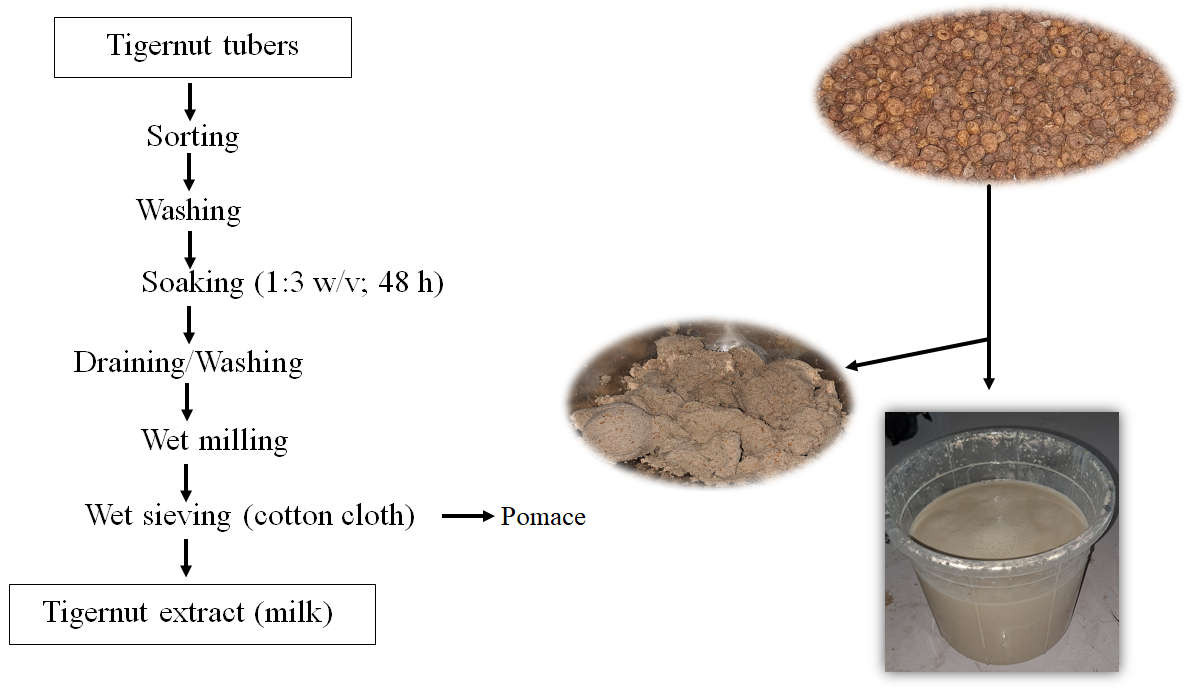Utilization of Tigernut Milk in Yoghurt Production: Physicochemical Properties and Growth of Lactobacillus bulgaricus and Streptococcus thermophiles in Tigernut Yoghurt.
DOI:
https://doi.org/10.54117/ijnfs.v3i2.41Keywords:
Tigernut, Yoghurt, Lactobacillus bulgaricus, Streptococcus thermophilus, physicochemical properties, Growth rateAbstract
This study investigated the physicochemical properties and growth of Lactobacillus bulgaricus and Streptococcus thermophiles in tigernut yoghurt. Yoghurt was produced from 3 sets of milk namely 100% tigernut milk, 50:50% of tigernut milk and cow milk; and 100% of cow milk. A set coded: TMYs, TCMYs and CMYs was sweetened with sugar and another set coded: TMYd TCMYd and CMYd was sweetened with date. Pasteurized milk samples were inoculated with the starter culture (1% w/v) and incubated at 43 °C for 6 and 12 h. Sample were analyzed using standard methods. pH decreased significant (P<0.05) after 6 and 12 h of fermentation from 6.44 – 3.57 and 3.52 for samples with sugar and from 6.46 –3.67 and 3.62 for samples with date. Level of pH decrease was significantly (P<0.05) highest in 100% tigernut yoghurt (TMYs and TMYd). Significant increase in TTA was >1.10 %lactic acid for all samples except for CMYd and TCMYd after 6 h. Viscosity ranged from 0.70 - 0.73 and 0.71 – 0.72 Pa.s, while TSS (oBrix) varied from 7.00 - 11.00 and 6.00 - 11.00 after 6 and 12 h respectively. Growth rate (/h) of L. bulgaricus ranged from 0.26 - 0.52 and 0.14 - 0.27 for sugar sweetened samples after 6 and 12 h and 0.24 - 0.49 and 0.12 - 0.25 for date samples. Tigernut milk supported the growth of the fermenting microbes with pH, TTA, viscosity and TSS that was comparable with those of cow milk yoghurt. Tigernut milk can therefore be utilized as a substrate in yoghurt production.

Downloads
Published
How to Cite
Issue
Section
License
Copyright (c) 2024 Patience Chisa Obinna-Echem

This work is licensed under a Creative Commons Attribution 4.0 International License.
